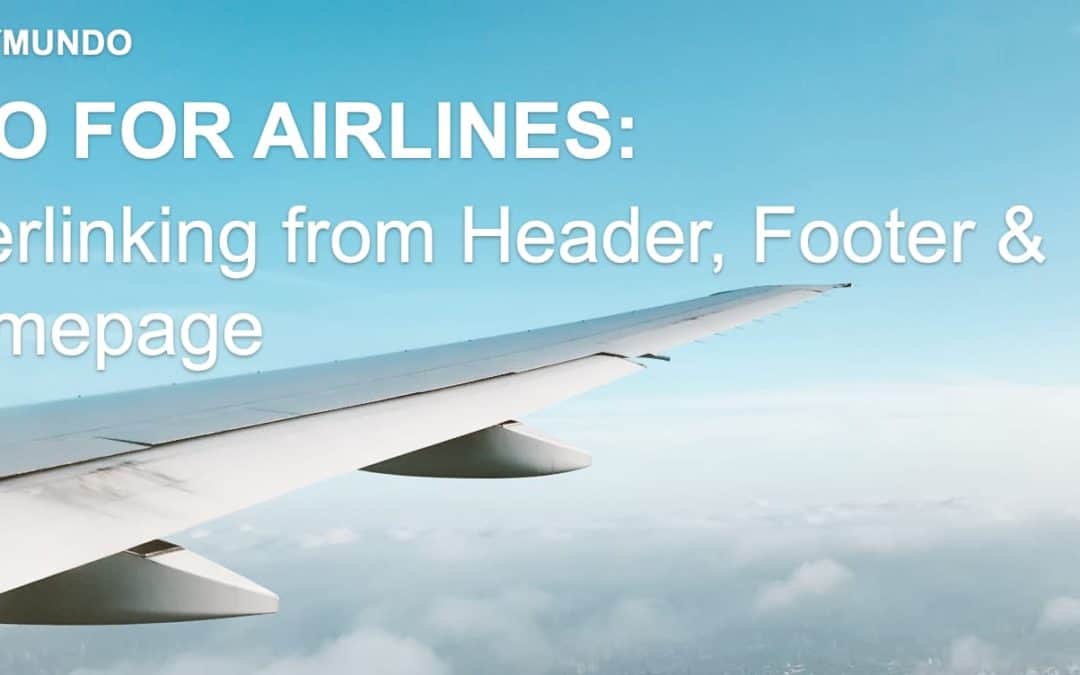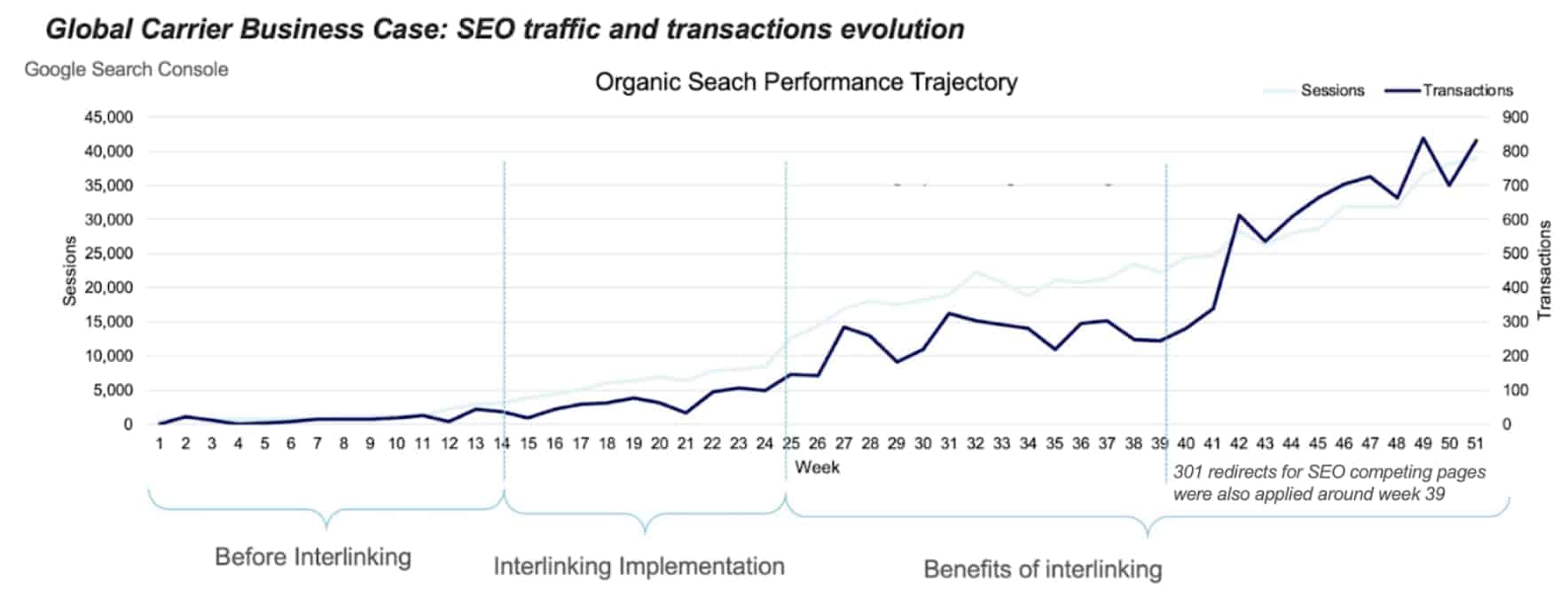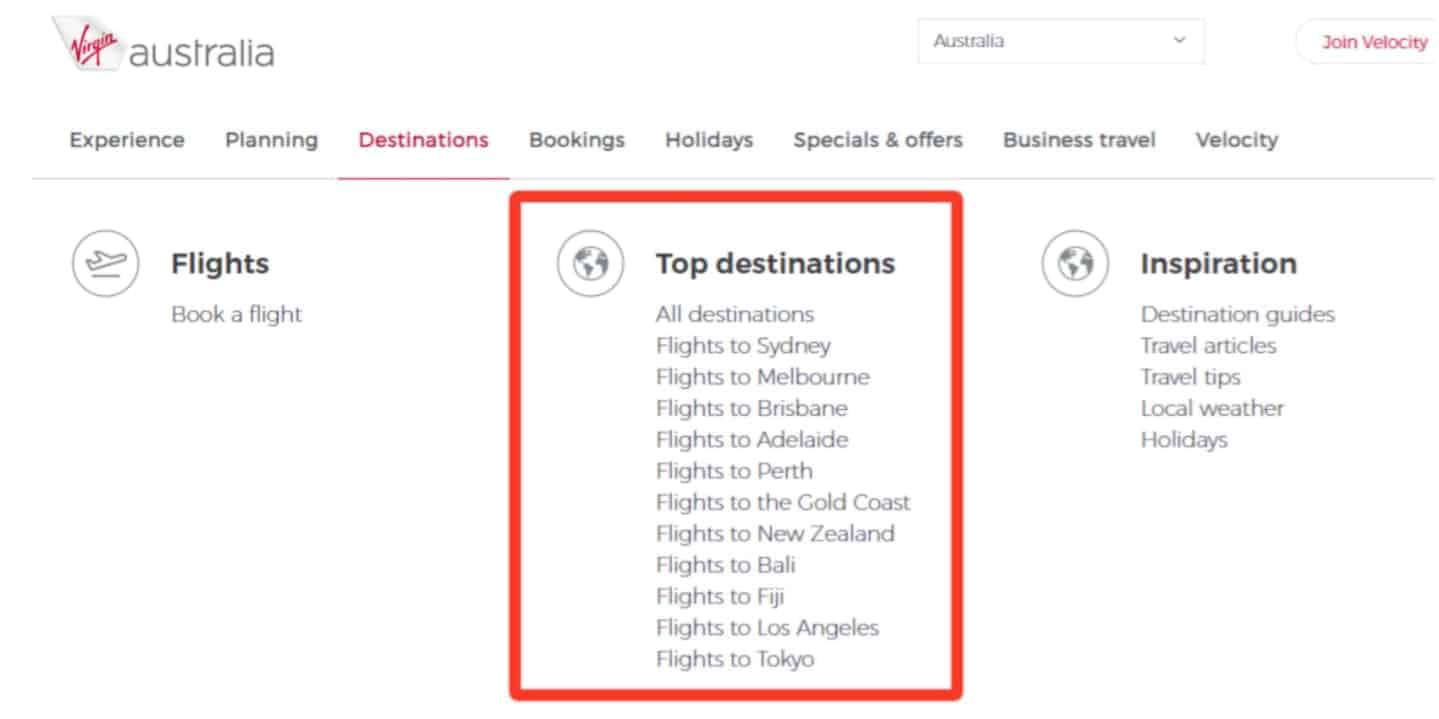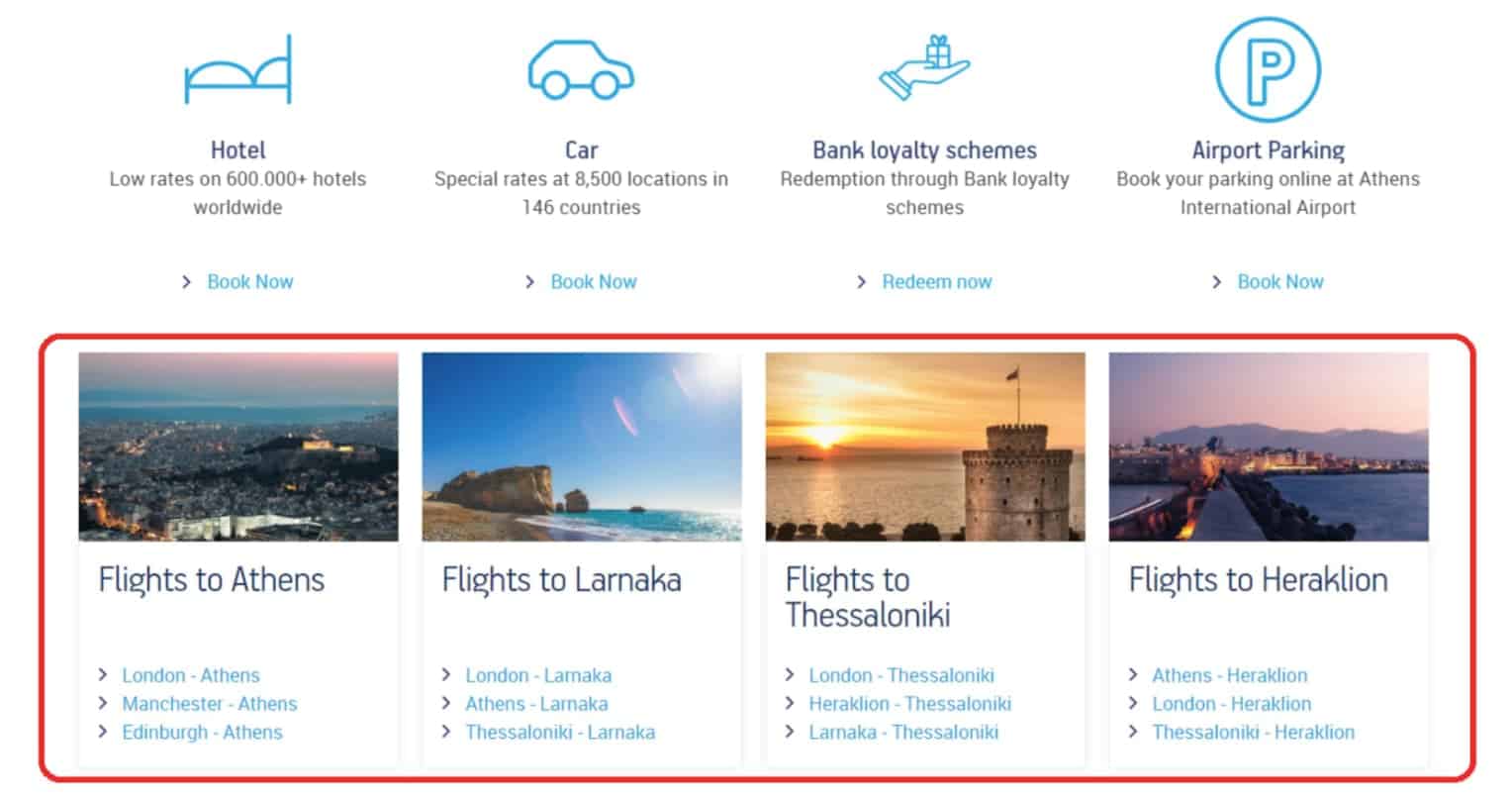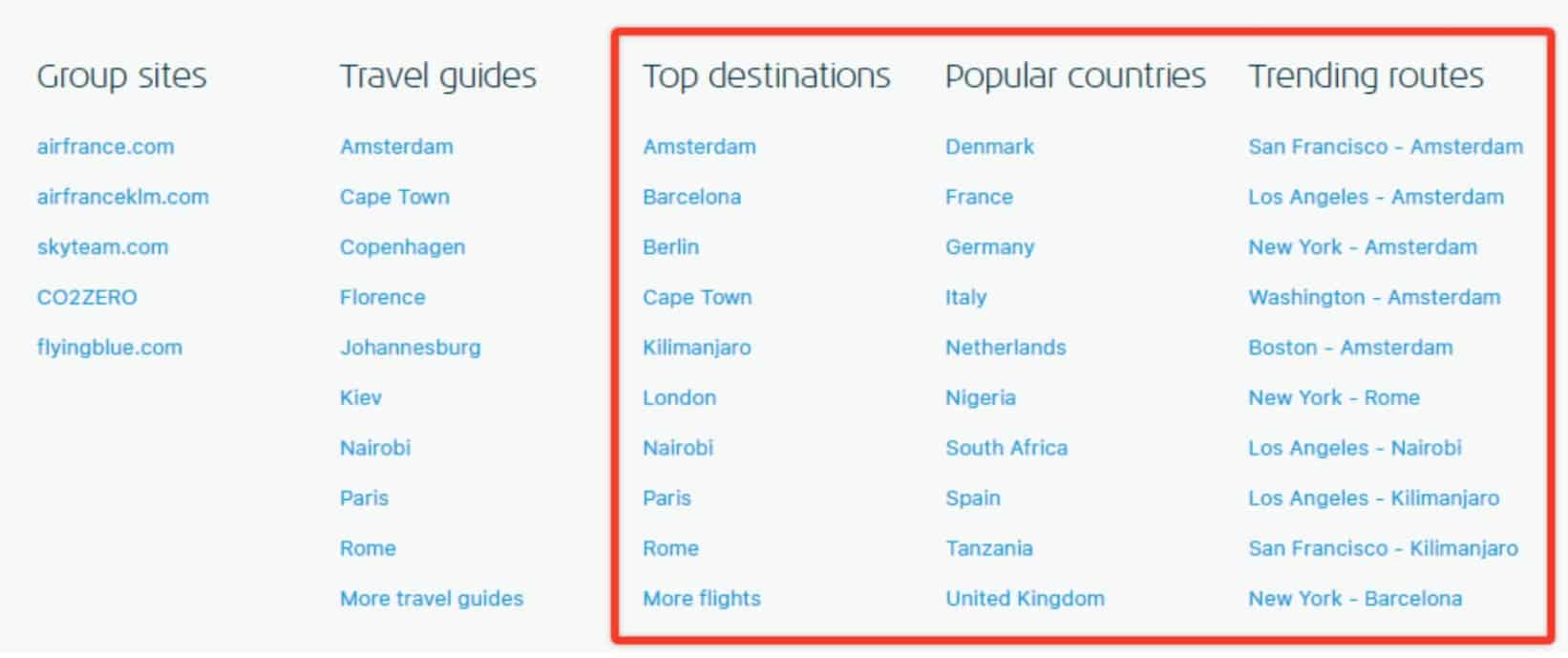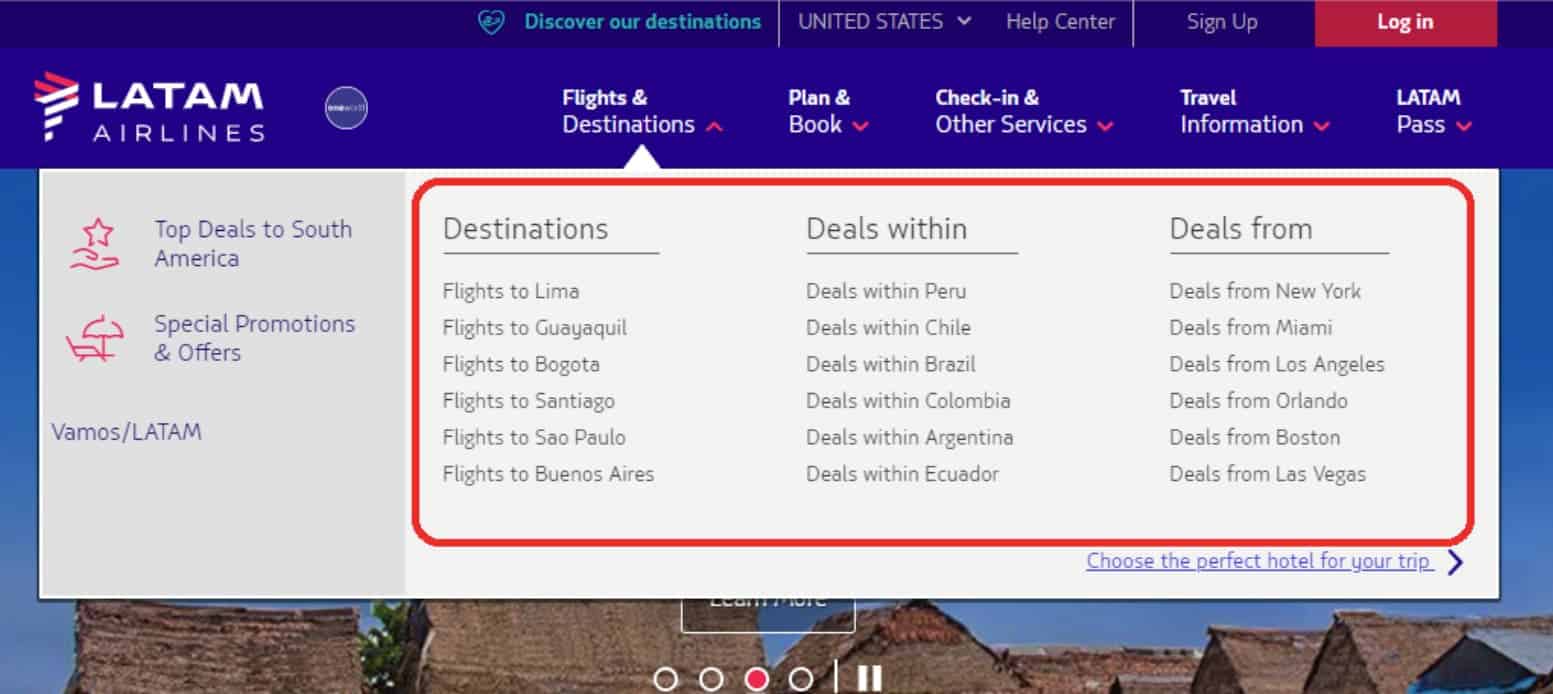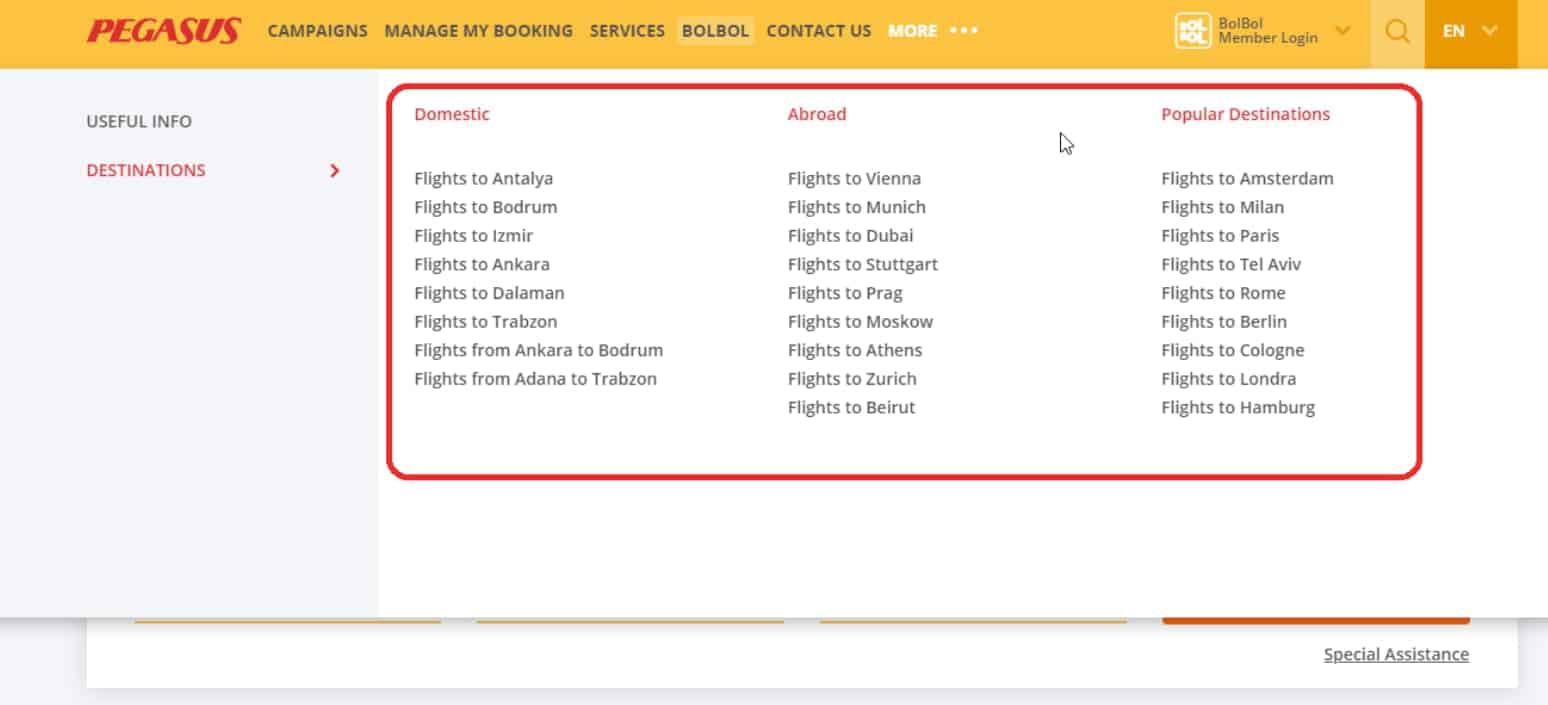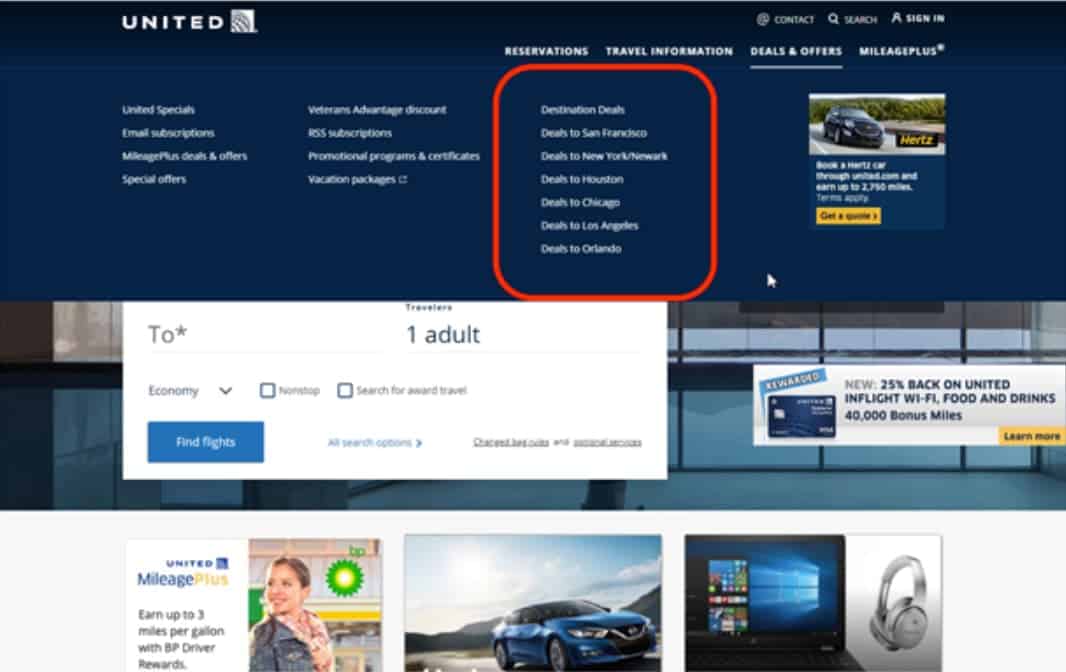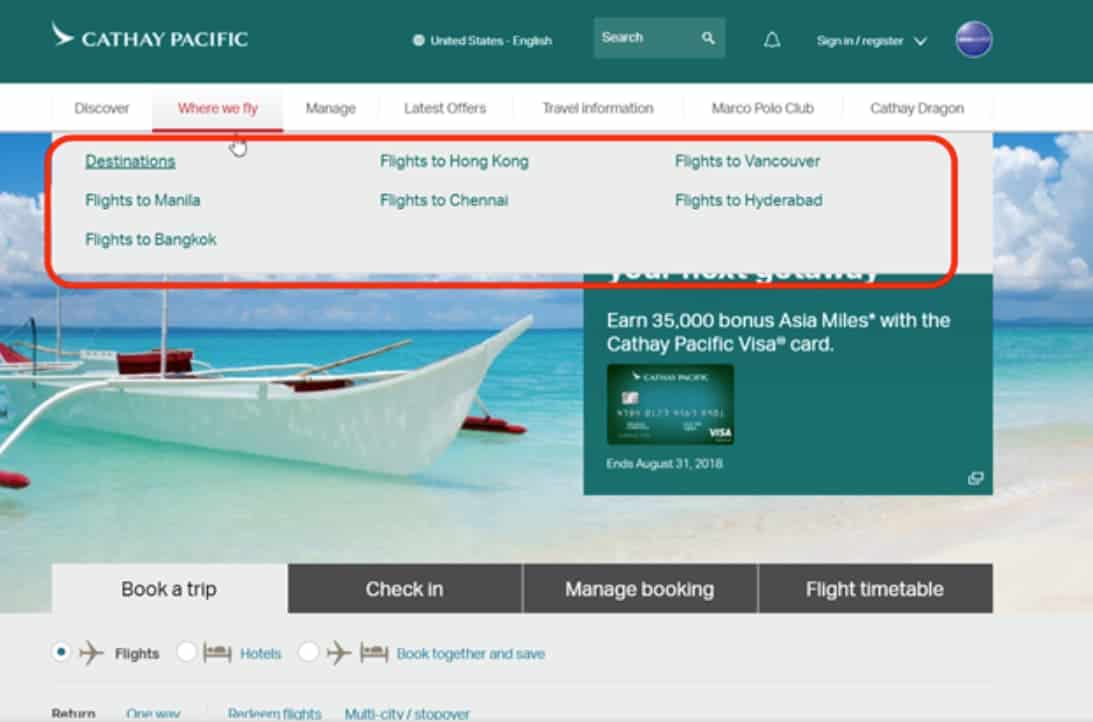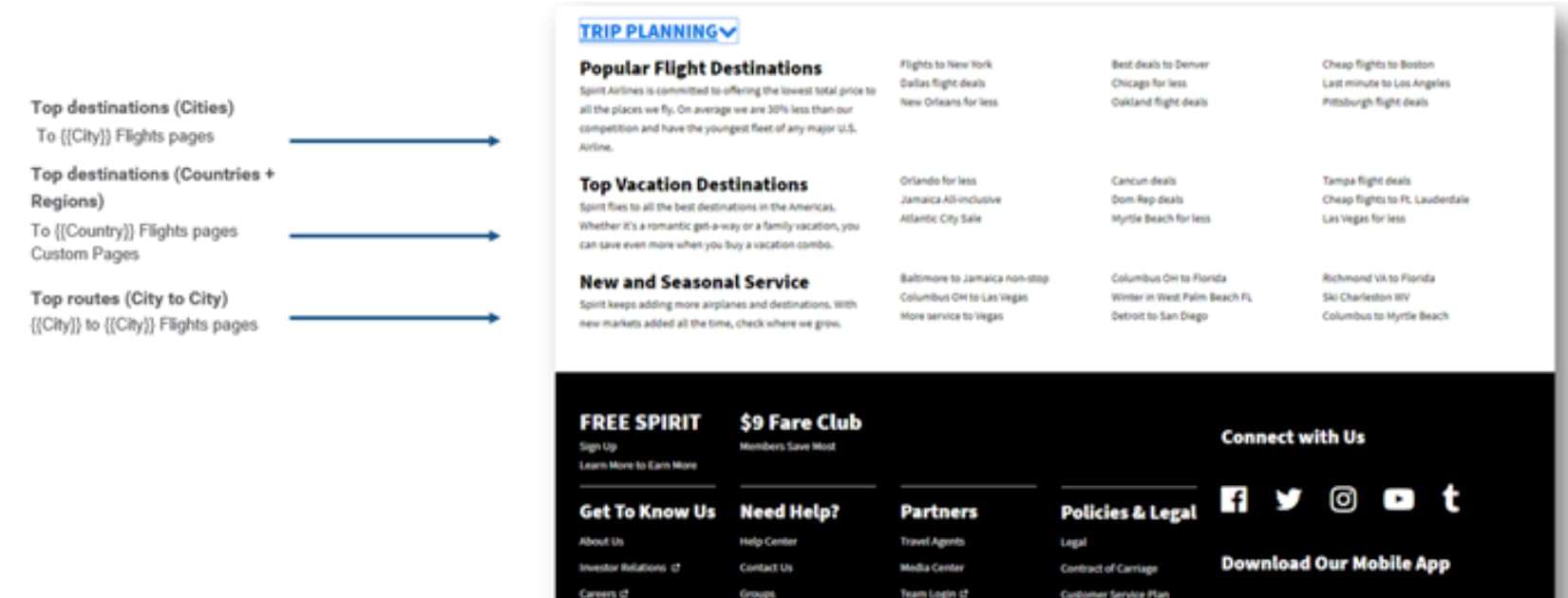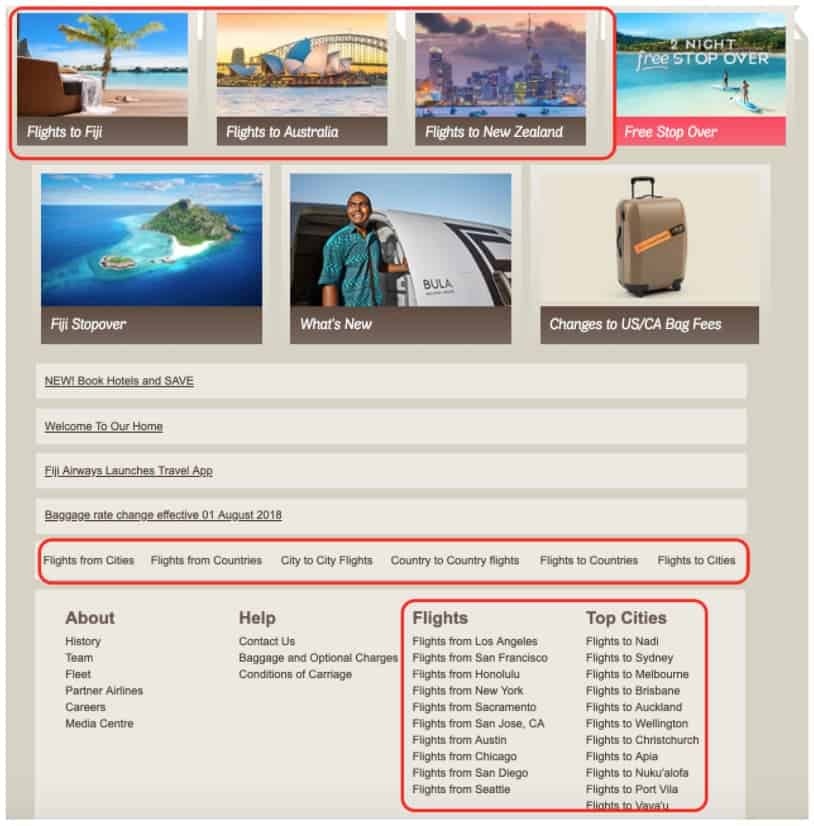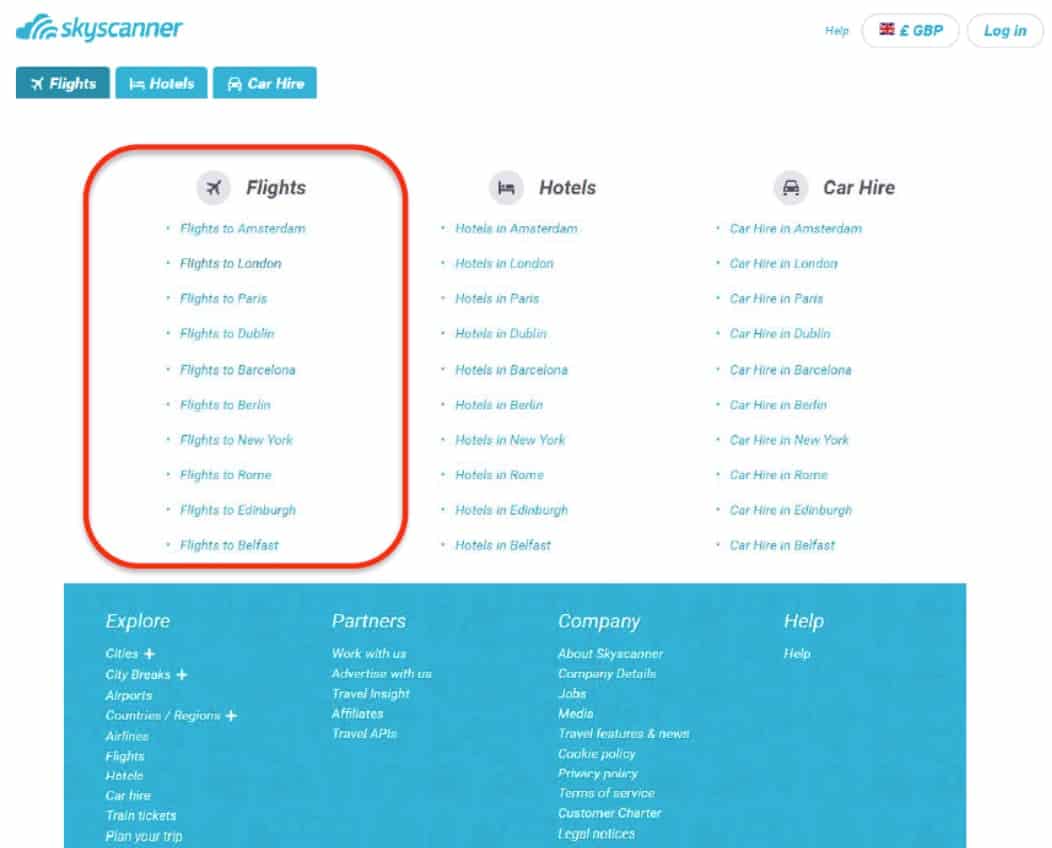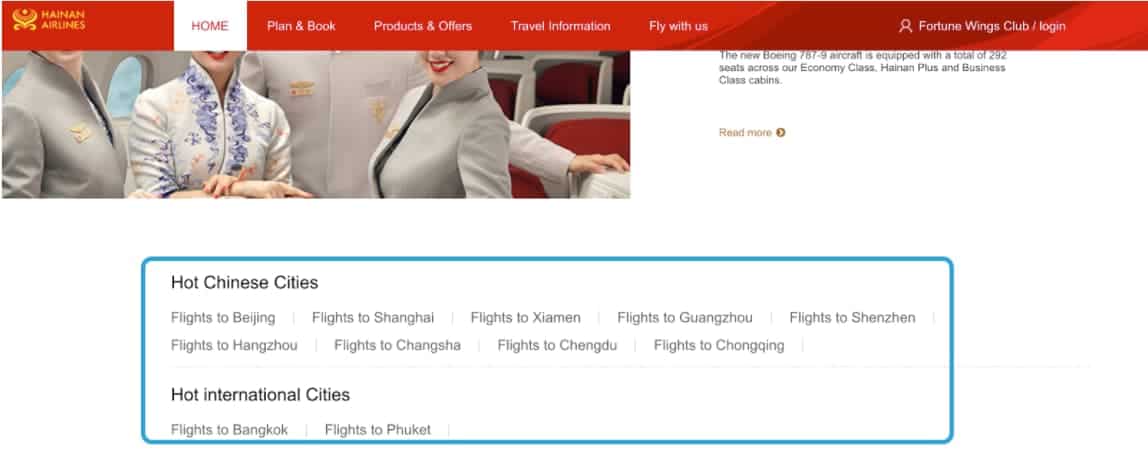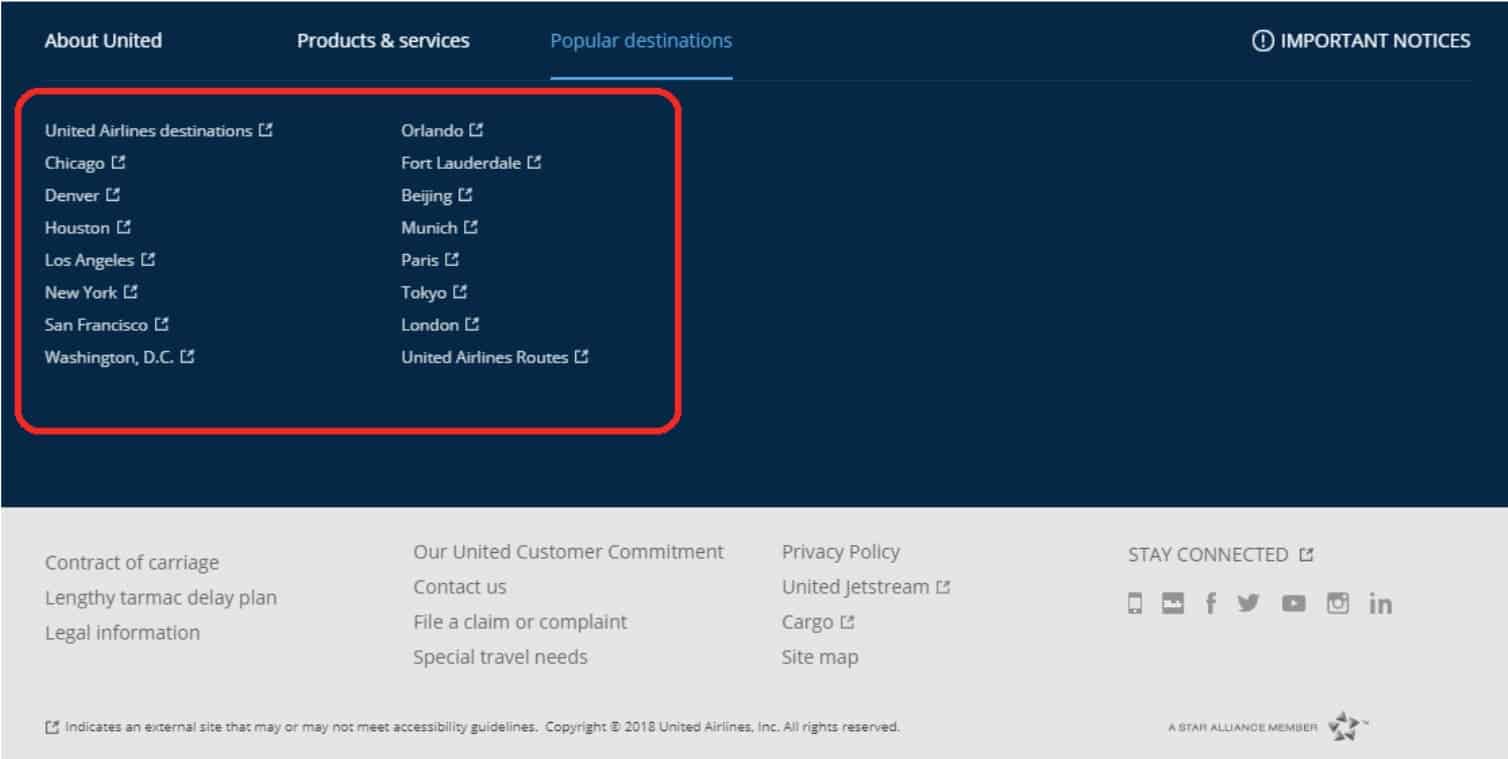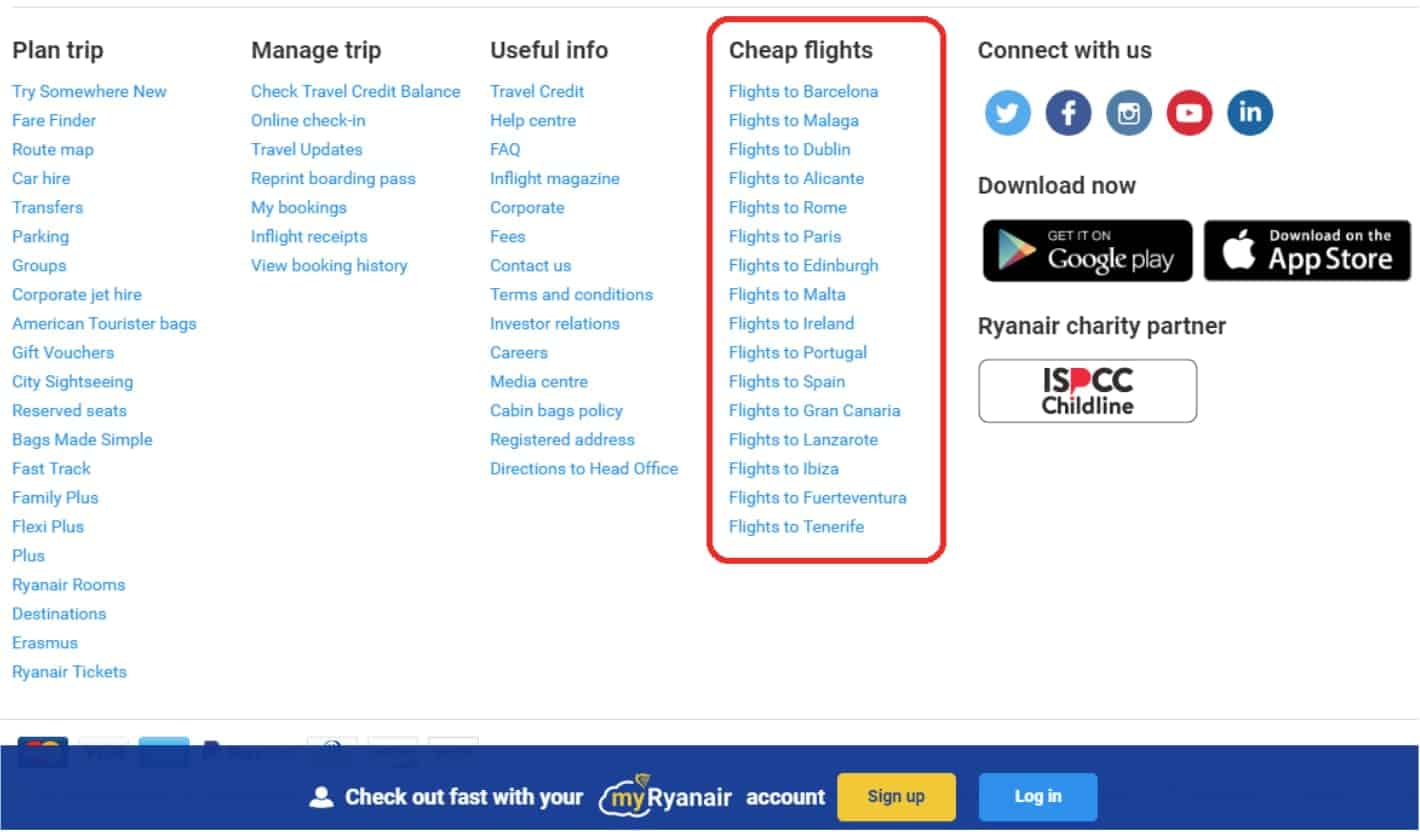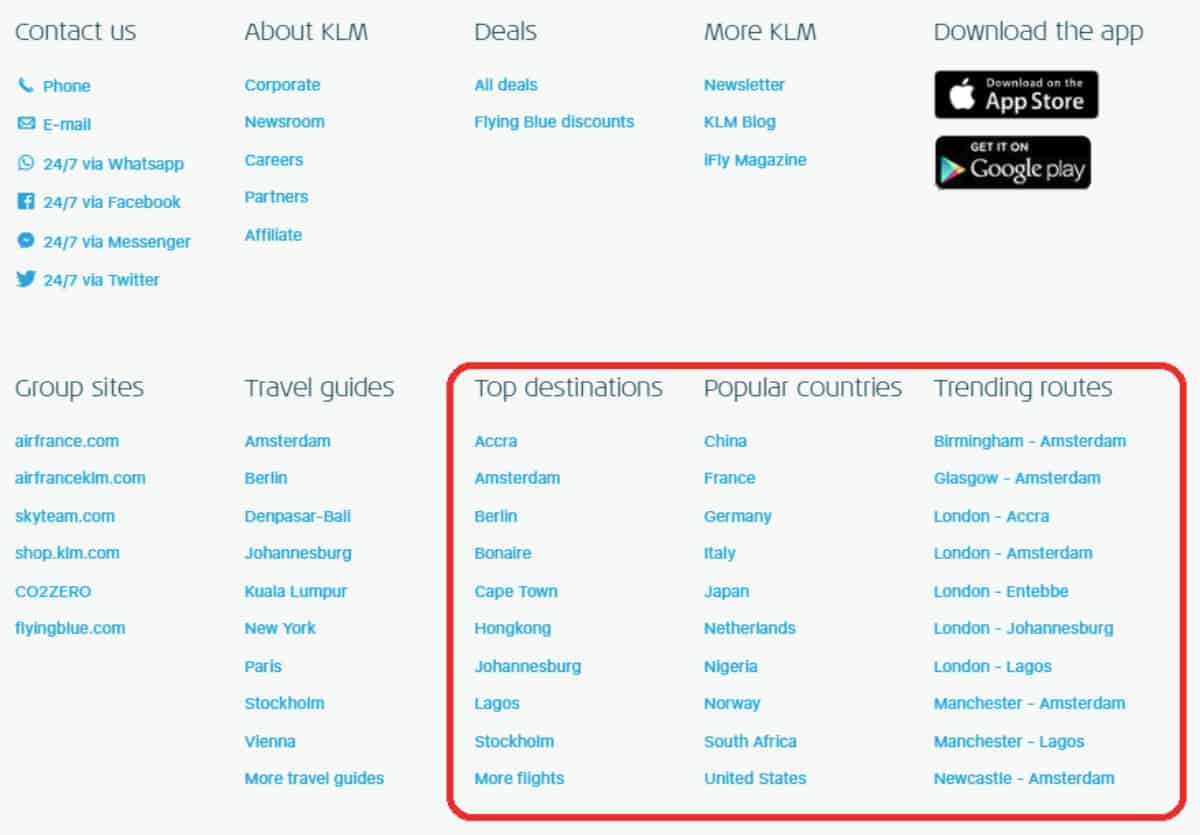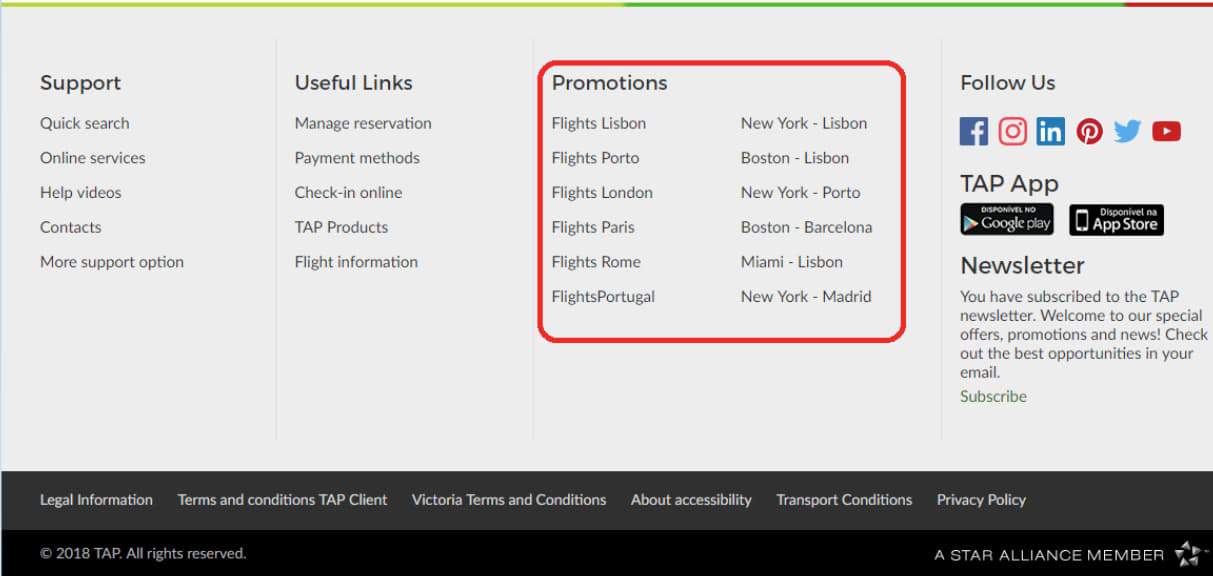This document offers best practices to implement internal links to airTRFX pages from the header, footer, and homepage body.
Back to SEO Resources for Airlines >
Who should read this document?
- Staff responsible for SEO
- Staff responsible for the airline’s website
- Staff responsible for making edits on airTRFX Control
Overview
Internal links are critical to achieving SEO success. On an airline’s website, they just can’t be ignored. In fact, according to a Searchmetrics study, in the travel industry, the pages on Google’s first results page use 23% more internal links than in other verticals.
Why are internal links so important for the SEO success of any airline’s website? There are a few tested reasons:
- Google relies on internal links to discover new pages.
- They establish the information hierarchy.
- They help distribute link equity (PageRank) around websites.
Thus, creating internal links from the airline’s core website to airTRFX pages is key to maximize the SEO performance of the airTRFX pages.
Our customers who implemented links to the top route pages from the header or footer menus have experienced impressive results.
For example, the chart above shows the exponential organic growth of an airline’s website after implementing interlinking from the header and footer menus.
Because we can’t make changes to the airline’s core website, we will need to work with the airline’s implementation team to deploy interlinking from the header, footer, and homepage body.
There are three priority link placements that we recommend using to maximize the power of the internal links.
Header menu – High impact
We recommend adding a link to airTRFX’s hubpage from the header menu and links to 5-6 top destinations.
Here is a great implementation example from Virgin Australia:
See more examples of header interlinking in Appendix A.
Homepage – High impact
The homepage is an especially important page because it’s typically the most valuable page on an airline’s website.
This is why it’s super important to strategically link out from the homepage to the priority airTRFX pages. The example below shows how Aegean Airlines uses an interlinking module on the homepage to showcase its priority routes:
See more examples of header interlinking in Appendix B.
Footer – Medium impact
Links in the footer of a page or in a sidebar aren’t given as much weight as links in the body of a page’s content (with some exceptions), but they are still important.
We recommend creating a footer submenu of up to 15 links pointing to the airline’s top international, or domestic routes. Here is an example from KLM:
See more examples of header interlinking in Appendix C.
Further Reading
SEO-Friendly Site Architecture – EveryMundo
How Google Search Works – Google
Links Report – Google
Google PageRank is NOT Dead: Why It Still Matters – Ahrefs
Best SEO Practices for Travel Brands Differ From Other Industries – Phocus Wire
Appendix A: Header Navigation Interlinking Examples
Links in the top navigation to different airTRFX templates, passing value to the top destinations:
Appendix B: Homepage Interlinking Examples
Widget in the homepage body linking out to the top destinations and routes:
Trip planning section, listing the most relevant destinations and routes:
Widget on the homepage body linking to top destinations and top origins by site edition, including sitemap links

